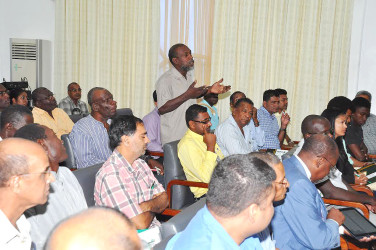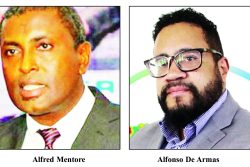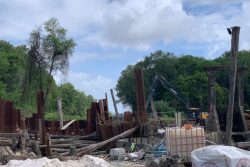By Valrie Grant
This week, members of our team are in San Diego, California to join more than 16,000 participants from 120 countries around the world at the 2015 Esri User Conference (Esri UC). These GIS professionals gather to discuss the power of maps and the application of geography in solving real-world problems.

The five-day User Conference held its first session on July 20 and will close today July 24. A variety of speakers were featured including a US presidential candidate, engineers, executives from international airports, banking executives, global first responders and a list of innovators from across every industry participated in the forum. They demonstrated how geospatial technology can make government ‘smarter,’ more able to combat global health challenges, ensure public safety, and drive greater revenues for businesses. Attendees shared ideas, experiences and best practices for improving our world through maps.
The Esri UC is the world’s biggest GIS event, covering content on how to implement and use the spatial technologies across hundreds of thousands of organizations.
Jack Dangermond, President of Esri told the forum that “we have millions of users around the globe who do amazing things with our technology every day. The User Conference is our opportunity to recognize their important work, learn from them, and empower them with even better tools and techniques to continue their mission.”
Some of the highlights of the conference included sessions on GIS and location intelligence for business. Location analytics is the ability to draw accurate conclusions from data assembled from a variety of population demographics and other data sources combined with GIS (Geographical Information Systems) mapping tools. It helps organizations predict patterns and emerging demographic trends. It helps businesses to tell a ‘better story’, increase their value and serve their customers better. With location analysis businesses can get answers to questions like: What’s the average distance of customers from your point of sale by drive time or by distance? Where should a shop or outlet, an ATM, a new development, a new restaurant be located? What impact will the competition have on sales potential? How many locations will a market area support?
Location is key to the success of a business. GIS-based site selection helps business owners to visually analyze and determine the best possible locations and market areas that would best serve their business interests based on specific predetermined conditions and variables.

Another highlight of the conference was the Caribbean User Group meeting which showcased happenings from the Caribbean region. It was highlighted that GIS is actively being used in the region and that many Caribbean countries are developing online GIS portals to better serve citizens and the business community. This Caribbean meeting was not only attended by residents of the Caribbean but stakeholders from the diaspora seeking an appreciation of the geospatial developments within the region.
It was heartening to see that many participants from the region considered GIS important enough to be present at the conference as they seek to enhance their appreciation for how GIS can assist in solving some of our most enduring problems: disaster management, environmental planning, land records management, disease mapping and surveillance and other public safety issues.
Nonetheless, not enough businesses in the region – and more so in Guyana – take advantage of spatial and location analysis. As more business executives become aware that GIS can be used to answer basic or sophisticated questions on how to improve businesses workflow, management, and ROI, it is hoped that they will start to incorporate location aware technologies in their business processes and office applications. They stand to benefit in the areas of field operations, supply-chains, transportation and logistics and customer service. GIS and location technologies is also being used in sales and marketing, retailing, claims and risk management, health care, real estate and much more.
It is our hope that this series will alert you to the potential of GIS and location intelligence in improving business strategy and business operations tactics.




